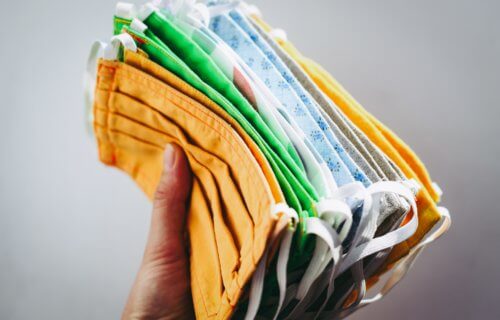WASHINGTON — Cloth masks are “lousy” when it comes to protecting people from COVID-19 and other airborne viruses, warns new research. Woven fabric doesn’t adequately filter out particles as well masks like N95s, scientists say.
Like many other viruses, COVID-19 is transmitted primarily via particles carried in the air. An infected person breathes out particles containing the virus into the air, which can then be inhaled by another person, who then becomes infected.
Face masks are widely considered an important first-line of defense against airborne transmission of the disease, as supported by previous studies. Fueled by the omicron variant, the latest wave of the pandemic prompted public health officials to recommend more protective face coverings because some masks offer significantly more protection than others..
For the new study, researchers from England, Germany, and France looked at the efficiency of particle filtration by woven fabric, which, unlike material used in standard air filters and masks, consists of fibers twisted together into yarns.
Using state of the art 3D imagery to see the air flow channels, the research team simulated the airflow through the channels and calculated filtration efficiency for particles a micrometer and larger in diameter. The study, published in the journal Physics of Fluids, concludes for particles in this size range, the filtration efficiency is low.
“Masks are air filters, and woven fabrics, such as cotton, make for good jeans, shirts, and other apparel, but they are lousy air filters. So, use woven fabric for clothing, and N95s or FFP2s or KF94s for masks,” says study co-author Richard Sear, a computational physicist at the University of Surrey, in a statement.
He explains that the flow simulations suggest that when a person breathes through cloth, most of the air flows through the gaps between the yarns in the woven fabric, bringing with it with more than 90 percent of the particles.
“In other words, these relatively large gaps are responsible for cloth being a bad material to make air filters from,” he continues. “In contrast, the filtering layer of an N95 mask is made from much smaller, five-micrometer fibers with gaps that are 10 times smaller, making it much better for filtering nasty particles from the air, such as those containing virus.”
While earlier research revealed similar findings, the study represents the first to simulate particles going directly through the gaps in woven fabric.
Dr. Sear notes that good masks should feature the “two Fs: good filtration and good fit. Surgical masks fit badly, so a lot of air goes unfiltered past the edges of the mask by the cheeks and nose.”
South West News Service writer Stephen Beech contributed to this report.
